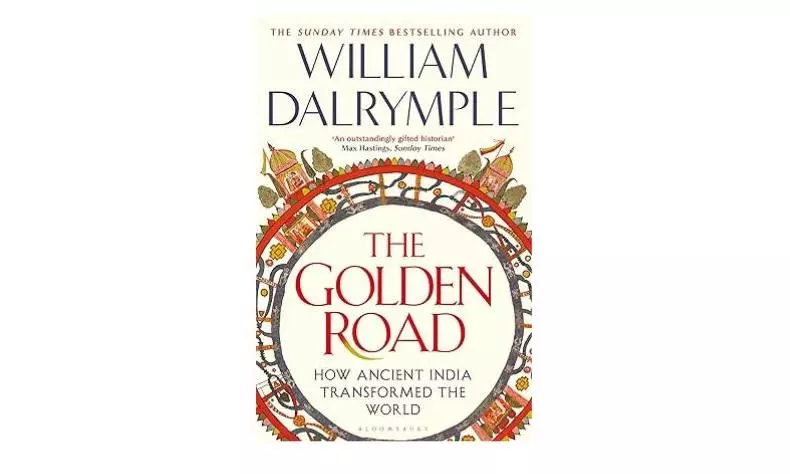Book Review | Golden Road trumps Silk Route
Dalrymple argues that India was a key intermediary in the exchanges between Rome and China

Had it been centrally governed like today, India, too, could have been a thalassocracy as were once Athens, Carthage, Great Britain, Netherlands, France, Spain and Portugal. The Pallavas and Cholas were indeed sea empires, reaching as they did, respectively, their writs and cultures to Indonesia and Cambodia.
But this is not news to the average child in India’s secondary schools. Nor is the fact that Indian cotton, jewels, spices and handicrafts were fancied and coveted in Europe or that the zero, the decimal system, algebra, trigonometry and the algorithm were first developed here before reaching Europe and the world.
At the outset, let it be said that historian William Dalrymple’s The Golden Road is far more likely to dazzle Western audiences. However, for Indians it carries scholarly impact.
Discussions of the Silk Road through Greece, Turkey, Iran, Ukraine, Arabia, Egypt, Spain, Afghanistan and Uzbekistan have so far dominated history discussions. It is further boosted by propaganda around China’s Belt and Road Initiative. Dalrymple challenges this narrative by proposing that exchanges between Rome and China was less driven by direct contact and much more through spread of texts via Buddhist monks and commerce along India’s maritime trade routes, particularly through the Red Sea. This is the “Golden Road”, connecting Red Sea, Arabian Sea, the Persian Gulf, the Indian Ocean, Bay of Bengal and the South China Sea all the way up to Japan with the Mediterranean. India was a key intermediary. This, by the way, is the book’s central thesis.
Paradoxically, it is likely to disappoint Hindutva enthusiasts, because it turns the spotlight on India’s Buddhist heritage, with Shaivism mentioned only in one chapter, that on the Khmer kings who built Angkor Wat, the largest temple in the world. But the Khmer monarchs also built Ishanapura, the City of Shiva, which today is a “wildly, magnificently, hopelessly overgrown Sleeping Beauty of a temple complex, tangled in a thick lattice of aerial roots and creepers”, reminiscent of scenes from the film, Lara Croft.
Work on Ishanapura started in 615 CE, at the same time as that on the second Bamiyan Buddha began in Afghanistan. Which is, or rather used to be, on the route traversed by Hiuen Tsang or Xuanzang, student of Silabhadra, alumnus of Nalanda, who opened India to the Chinese courts. Xuanzang was a contemporary of Wu Zetian, China’s only empress who ruled in her own right and whose reign, curiously enough, was legitimised by Indian Mahayana monks who declared her a reincarnation of Vimalaprabha, a disciple of the Buddha. Pallava prince Vajrabodhi, renowned for his expertise in building mandalas, visited Wu’s court and died in China. It was Vajrabodhi and his protégé, Amoghavajra, who carried Buddhism to the Far East. Amoghavajra went on to begin his own line of monks in Java.
In the 12th century, friends Gerard and Ghalib translated Indian texts, respectively, from Spanish to Latin and Arabic to Spanish, which themselves had arrived in Arabic via Persian from Sanskrit (and Syriac from Greek). Dalrymple’s research thus makes exciting reading. He also raises a pertinent question before the reader: Was India’s disparate, decentralised state the source of its fascinating abundance of ideas and originality? Did its pluralism make it thought leader of the day? Is this work, therefore, a golden argument for federalism and democracy?
The Golden Road: How Ancient India Transformed the World
By William Dalrymple
Bloomsbury India
pp. 484; Rs 999
